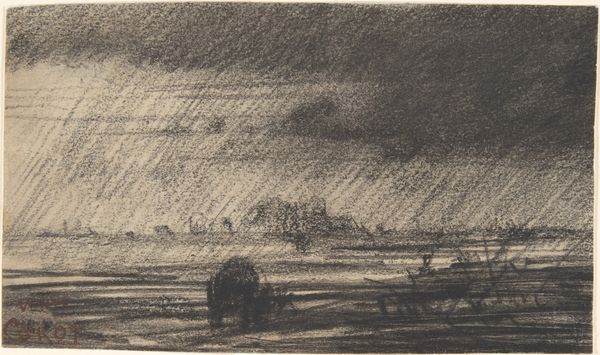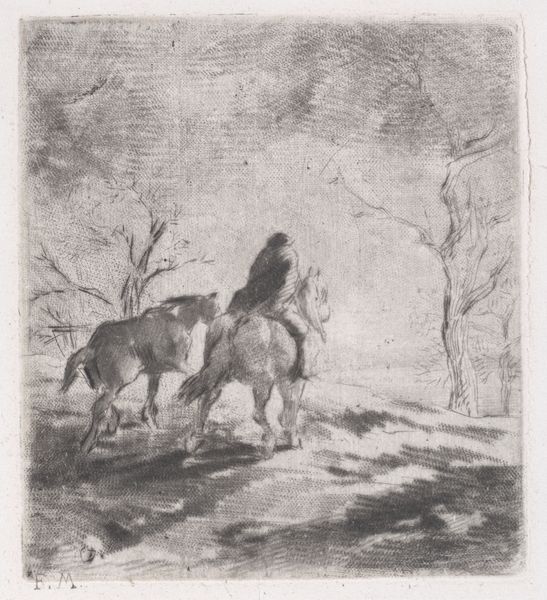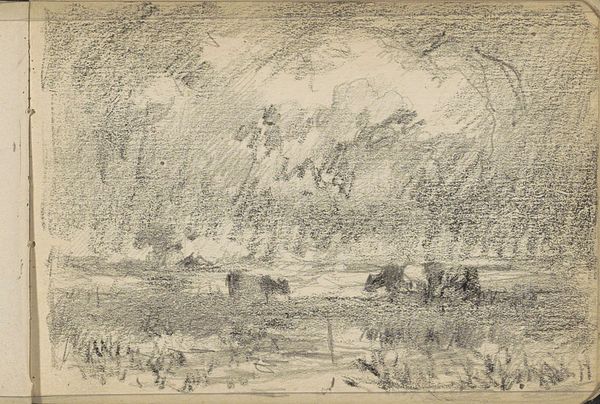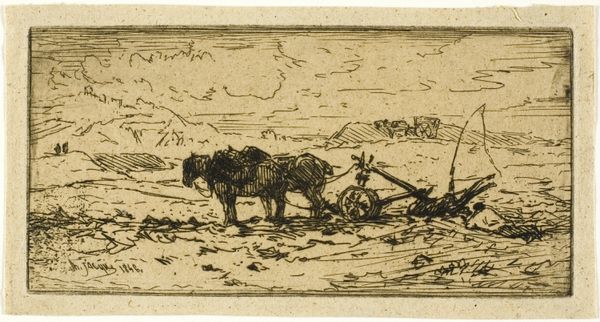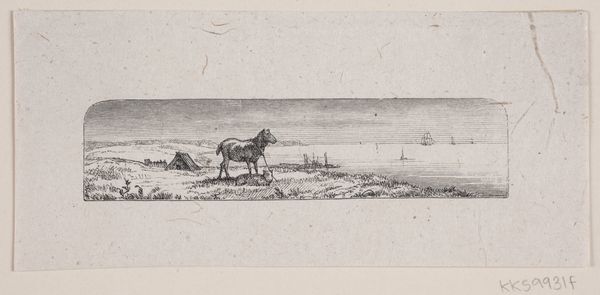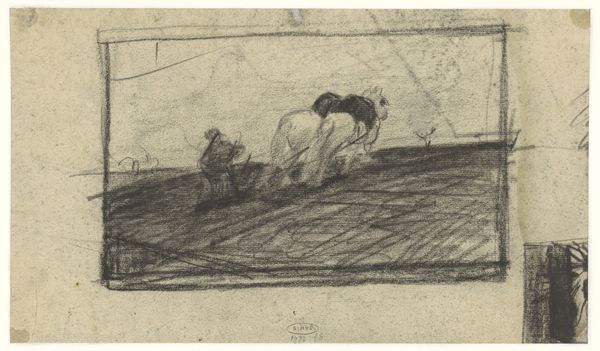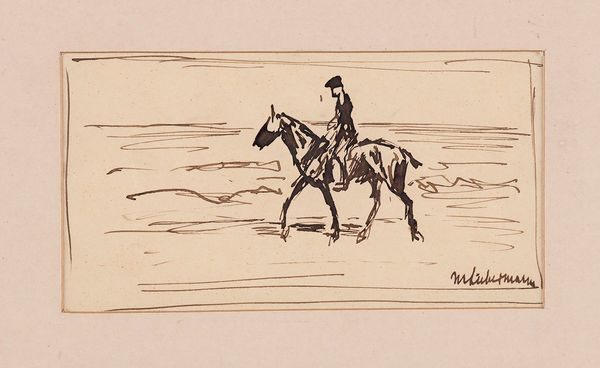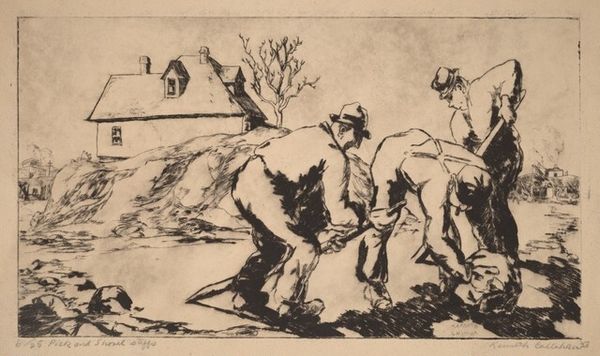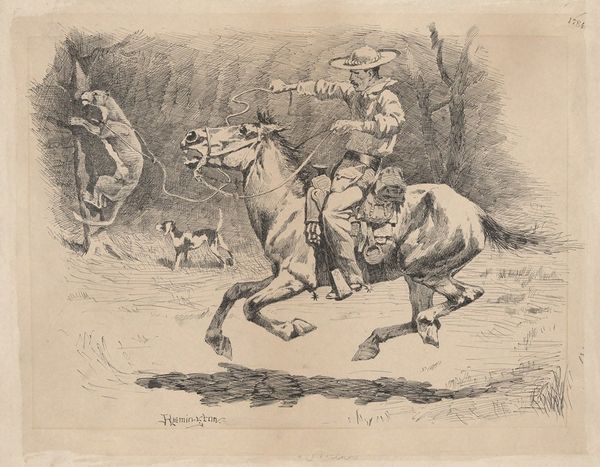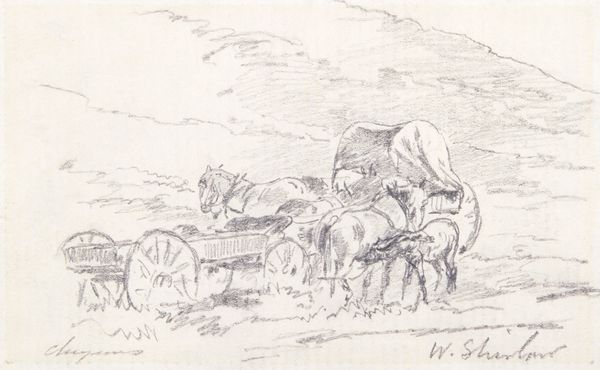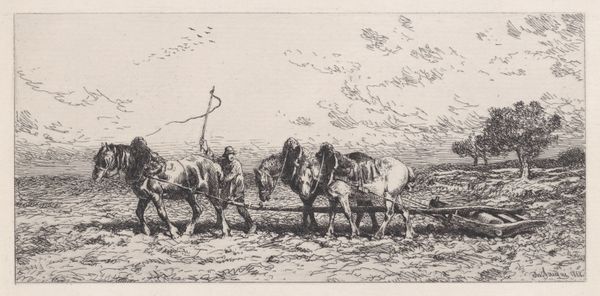
drawing, print, graphite
#
drawing
# print
#
pen sketch
#
landscape
#
figuration
#
graphite
#
realism
Copyright: National Gallery of Art: CC0 1.0
Editor: Here we have Anatoli Kaplan’s “The Carter,” created sometime between 1957 and 1961. It seems to be a graphite print, and what strikes me first is its raw energy; you can almost feel the urgency of the scene. What do you see in this work? Curator: Beyond the evident drama, I see a potent commentary on labor and marginalization, particularly within the context of Soviet-era artistic expression. The stark realism speaks to the lived experience of many, especially those in rural communities, a theme often downplayed in official narratives. Notice the hunched figure of the carter – what does that posture suggest to you? Editor: Hardship, definitely. A kind of weariness, a burden they carry... almost a deliberate contrast to the more heroic images often promoted by socialist realism. Curator: Exactly! Kaplan seems to subtly resist idealization. By focusing on the ordinary, almost brutal realities of work, he elevates the everyday struggles often ignored in favor of celebrating grand industrial achievements. It asks us to consider whose stories are told, and whose are obscured, especially concerning ethnic minorities relegated to perform manual labor. How does the weather influence your reading of this piece? Editor: Well, the rain amplifies the feeling of struggle, like the elements themselves are bearing down on the figures, it is miserable! It removes all the romanticism we can think about the job! Curator: Precisely. That unromantic depiction makes a powerful statement. We must then recognize that his artwork is advocating for basic respect. The absence of color simplifies its central theme and reveals an unvarnished account. This artwork serves as a form of quiet protest. What have you noticed? Editor: I see now that it’s not just about the aesthetic representation, but about giving visibility to a marginalized perspective. Thank you! Curator: The beauty is in recognizing its historical echo; by viewing it in this light, we might discern additional layers.
Comments
No comments
Be the first to comment and join the conversation on the ultimate creative platform.
